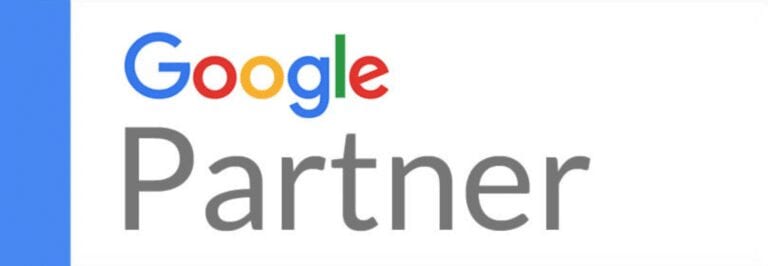JOURNAL
Digital Advertising vs Digital Marketing: Key Insights
Is digital marketing just a shiny buzzword, or is it an umbrella for digital advertising? This question has sparked many debates among business owners striving to boost their online presence. While the terms ‘digital marketing’ and ‘digital advertising’ are often used interchangeably, they serve different purposes and offer unique benefits to businesses eager to improve online visibility and increase website traffic. This article delves into the intricate relationship between these two concepts, providing key insights to help small to medium-sized businesses navigate the digital landscape effectively.
Understanding Digital Advertising vs Digital Marketing
Digital marketing is a broad strategy that leverages various online channels to connect with audiences. It encompasses techniques like search engine optimisation (SEO), content marketing, and social media engagement. The objective is to build a lasting online presence and foster customer relationships over time. By focusing on customer engagement, digital marketing aims to improve brand loyalty and drive conversions. It is a continuous effort, often with a focus on organic growth, which can be maintained at a lower cost compared to paid efforts. In contrast, digital advertising is a more focused subset of digital marketing. It involves paid promotional activities that aim to capture the audience’s attention quickly. This includes placing ads on social media platforms, search engines, and various websites. Digital advertising is typically short-term and designed to generate immediate results, such as increased web traffic or sales. Its primary objective is to reach a large audience swiftly, often through targeted campaigns that require a dedicated budget.- Digital marketing is an ongoing strategy; digital advertising is often short-term.
- Digital marketing focuses on organic growth; digital advertising relies on paid efforts.
- Digital marketing builds long-term relationships; digital advertising targets quick responses.
- Digital marketing encompasses multiple channels; digital advertising uses specific platforms.
- Digital marketing has a broader scope; digital advertising is a focused subset.
Key Differences Between Digital Marketing and Advertising
Cost is a significant differentiator between digital advertising and digital marketing. Digital advertising requires financial investment for each campaign, as it involves paid promotions on platforms like search engines and social media. This investment needs to be continuous to maintain visibility and engagement. In contrast, digital marketing can incorporate cost-free elements such as SEO and organic social media strategies. These methods focus on building sustainable growth without the necessity for ongoing expenditure, making them more budget-friendly over time. When it comes to strategic goals and timelines, digital advertising is often short-term and result-oriented. The primary aim is to generate quick responses, such as clicks or sales, through targeted campaigns. This approach is ideal for time-sensitive promotions or product launches. Conversely, digital marketing prioritises long-term brand development and relationship building. The strategy involves continuous efforts to engage and nurture the audience, with the objective of enhancing brand loyalty and driving sustained conversions. Content and engagement tactics further highlight the differences. Digital advertising typically uses engaging visuals and concise messages designed to capture immediate attention. The focus is on compelling calls-to-action that prompt users to engage rapidly. Digital marketing, however, employs a broader range of content types, such as blogs, videos, and infographics, to provide value and educate the audience. This approach fosters deeper connections and encourages ongoing interaction, aligning with the overarching goal of strengthening brand presence.
Integrating Digital Advertising and Marketing Strategies
 The integration of digital advertising and digital marketing is crucial for maximising business outcomes and gaining a competitive edge. By combining these two approaches, businesses can leverage the strengths of both to achieve more comprehensive results. Digital advertising excels in driving immediate traffic and capturing attention through targeted campaigns, while digital marketing focuses on building long-term relationships and enhancing brand loyalty. Integrating these strategies ensures that businesses can attract new customers through advertising while simultaneously nurturing existing ones through marketing efforts. This holistic approach not only improves return on investment but also strengthens brand presence in the market.
Practical integration strategies involve aligning advertising campaigns with broader marketing objectives. For instance, businesses can use digital ads to generate leads and then employ email marketing to follow up with personalised content designed to convert those leads into customers. Additionally, social media advertising can be utilised to boost visibility, while content marketing can provide valuable information that engages the audience further. By synchronising these efforts, businesses can ensure a seamless customer journey that enhances user experience and promotes consistent messaging across all platforms. This strategic alignment between digital advertising and marketing is essential for driving both short-term results and long-term growth.
The integration of digital advertising and digital marketing is crucial for maximising business outcomes and gaining a competitive edge. By combining these two approaches, businesses can leverage the strengths of both to achieve more comprehensive results. Digital advertising excels in driving immediate traffic and capturing attention through targeted campaigns, while digital marketing focuses on building long-term relationships and enhancing brand loyalty. Integrating these strategies ensures that businesses can attract new customers through advertising while simultaneously nurturing existing ones through marketing efforts. This holistic approach not only improves return on investment but also strengthens brand presence in the market.
Practical integration strategies involve aligning advertising campaigns with broader marketing objectives. For instance, businesses can use digital ads to generate leads and then employ email marketing to follow up with personalised content designed to convert those leads into customers. Additionally, social media advertising can be utilised to boost visibility, while content marketing can provide valuable information that engages the audience further. By synchronising these efforts, businesses can ensure a seamless customer journey that enhances user experience and promotes consistent messaging across all platforms. This strategic alignment between digital advertising and marketing is essential for driving both short-term results and long-term growth.
Examples of Successful Integration
One example of successful integration is a retail brand that used targeted social media ads to promote a seasonal sale. The ads directed users to a landing page offering exclusive content and discount codes, encouraging further engagement. The brand then utilised email marketing to send personalised offers to those who visited the page, effectively converting interest into sales. Another example is an e-commerce company that integrated pay-per-click (PPC) advertising with content marketing efforts. The PPC ads targeted specific keywords related to their products, attracting potential customers to the website. Concurrently, the company published informative blog posts addressing common customer queries, building trust and encouraging repeated visits, which ultimately led to increased conversions.The Role of a Digital Marketing Agency in Advertising
Digital marketing agencies play a crucial role in helping businesses establish a strong online presence. They offer a wide range of services designed to enhance visibility and drive engagement across digital platforms. These services typically include search engine optimisation (SEO), which improves website rankings in search results, content marketing that focuses on creating valuable and relevant content to attract and retain a clearly defined audience, and social media strategies that engage users on platforms where they are most active. By utilising these tactics, digital marketing agencies aim to build long-term relationships with customers, fostering brand loyalty and encouraging conversions over time. In contrast, advertising agencies concentrate primarily on the creation and management of ad campaigns. Their main focus is on producing visually appealing and persuasive content that captures the attention of the target audience quickly. This often involves designing and placing ads across various digital platforms such as search engines, social media, and websites. Advertising agencies are adept at crafting messages that prompt immediate responses, making them ideal for businesses looking to promote products or services rapidly. Their expertise lies in understanding consumer behaviour and leveraging data-driven insights to optimise campaign performance.- Digital Marketing Agency Functions:
- SEO and content marketing
- Social media strategy development
- Advertising Agency Functions:
- Creation of ad campaigns
- Management and optimisation of ad placements
Benefits and Challenges of Digital Advertising and Marketing
Digital marketing provides numerous long-term benefits, such as brand development and audience engagement. It utilises strategies like content marketing and social media engagement to build trust and foster relationships with consumers. By consistently delivering valuable content, businesses can enhance brand loyalty and drive conversions over time. Digital advertising, on the other hand, offers immediate exposure and can quickly capture the attention of a target audience. Through paid promotions, such as pay-per-click (PPC) campaigns and social media ads, businesses can generate swift results, such as increased web traffic and sales. This immediate impact is particularly advantageous for time-sensitive promotions and product launches. However, both digital advertising and marketing face several challenges. Digital advertising requires continuous financial investment, as visibility and engagement are directly tied to paid efforts. This ongoing cost can strain budgets, especially for small businesses. Additionally, there is a potential for misallocation of resources if campaigns are not strategically aligned with business objectives. Digital marketing also presents its own set of challenges, such as the need for consistent content creation and the difficulty in measuring long-term results. Furthermore, changes in algorithms and platform policies can impact the effectiveness of digital marketing strategies.- Continuous financial investment is needed for digital advertising.
- Resource misallocation can occur if strategies are not aligned.
- Digital marketing requires ongoing content creation.
- Measuring long-term results in digital marketing is challenging.
- Algorithm changes can affect strategy effectiveness.
- Platform policy changes can disrupt marketing efforts.
Future Trends in Digital Advertising and Marketing
 What are the future trends in digital marketing? The future of digital marketing is significantly influenced by technological advancements, particularly the integration of artificial intelligence (AI) and data-driven strategies. AI is revolutionising how marketers engage with consumers by enabling personalised content delivery and automating customer interactions. As a result, businesses can optimise their marketing efforts based on real-time data insights, leading to more effective customer engagement and higher conversion rates. Additionally, the rise of mobile advertising is reshaping the landscape, as more consumers access content via smartphones and tablets. This shift necessitates mobile-optimised strategies to reach audiences effectively, ensuring seamless user experiences across all devices.
How is digital advertising evolving? Digital advertising is evolving with the advent of programmatic and interactive ad formats. Programmatic advertising automates the buying and selling of ad space, allowing for more precise targeting and efficient budget allocation. This method uses machine learning algorithms to analyse consumer behaviour and deliver relevant ads to the right audience at the right time. Interactive ad formats, such as augmented reality (AR) and virtual reality (VR), are gaining traction, offering immersive experiences that engage users on a deeper level. These innovations not only capture attention but also enhance brand interaction, paving the way for more engaging and impactful advertising campaigns.
What are the future trends in digital marketing? The future of digital marketing is significantly influenced by technological advancements, particularly the integration of artificial intelligence (AI) and data-driven strategies. AI is revolutionising how marketers engage with consumers by enabling personalised content delivery and automating customer interactions. As a result, businesses can optimise their marketing efforts based on real-time data insights, leading to more effective customer engagement and higher conversion rates. Additionally, the rise of mobile advertising is reshaping the landscape, as more consumers access content via smartphones and tablets. This shift necessitates mobile-optimised strategies to reach audiences effectively, ensuring seamless user experiences across all devices.
How is digital advertising evolving? Digital advertising is evolving with the advent of programmatic and interactive ad formats. Programmatic advertising automates the buying and selling of ad space, allowing for more precise targeting and efficient budget allocation. This method uses machine learning algorithms to analyse consumer behaviour and deliver relevant ads to the right audience at the right time. Interactive ad formats, such as augmented reality (AR) and virtual reality (VR), are gaining traction, offering immersive experiences that engage users on a deeper level. These innovations not only capture attention but also enhance brand interaction, paving the way for more engaging and impactful advertising campaigns.
